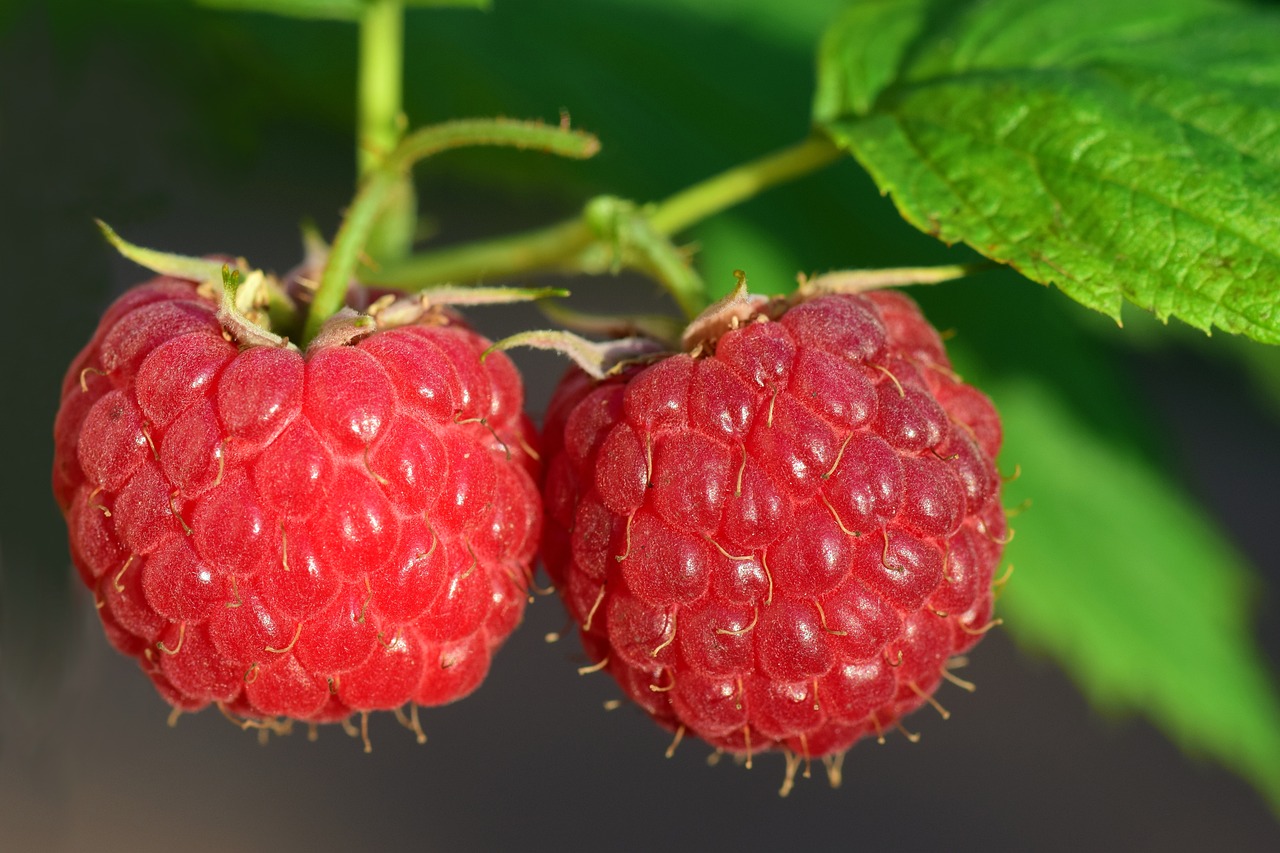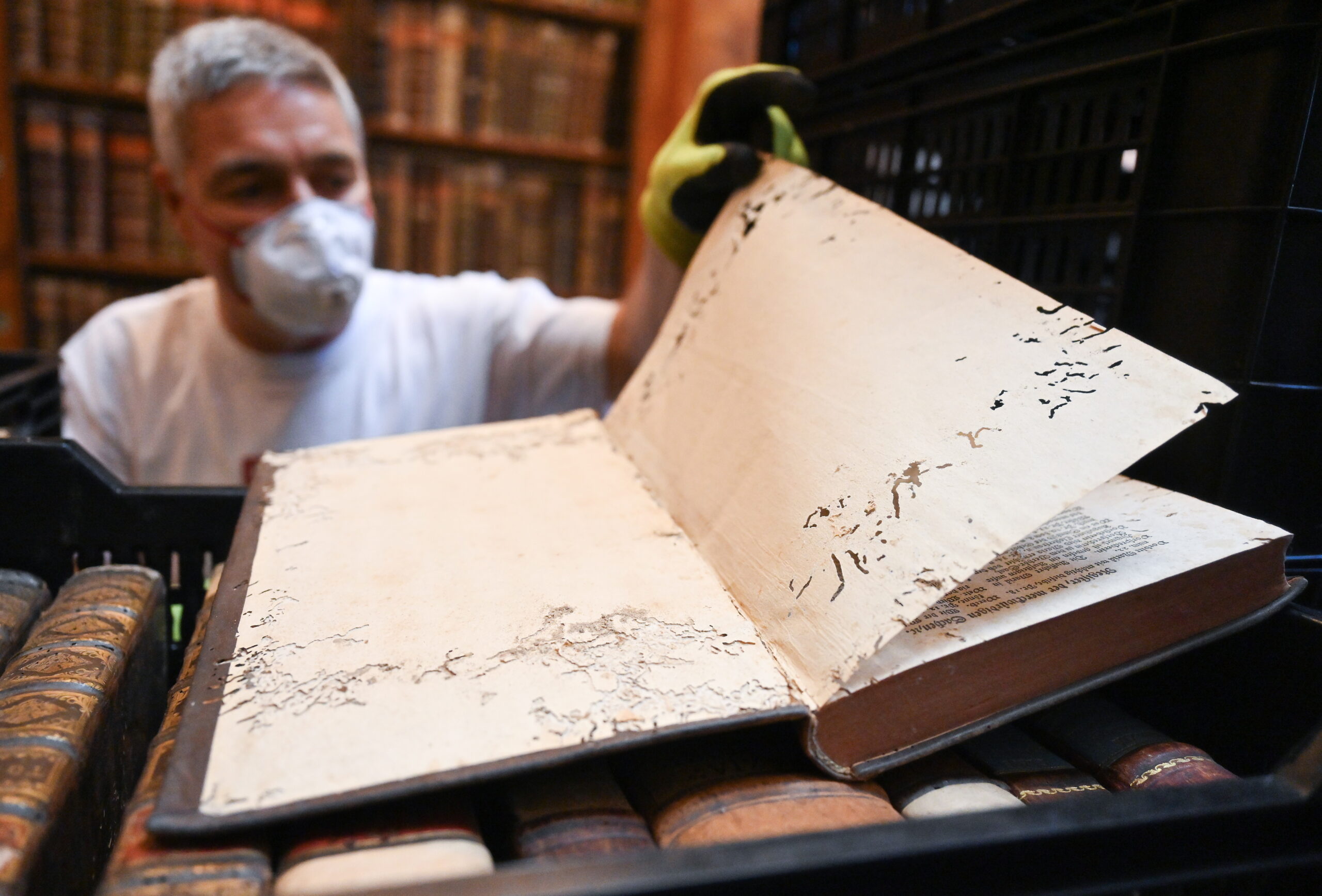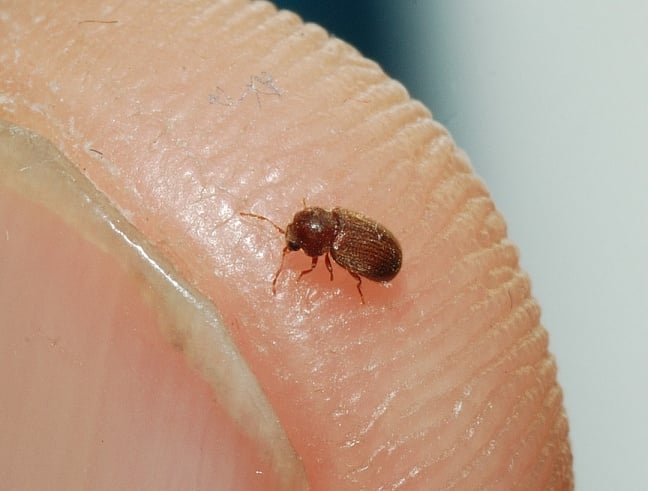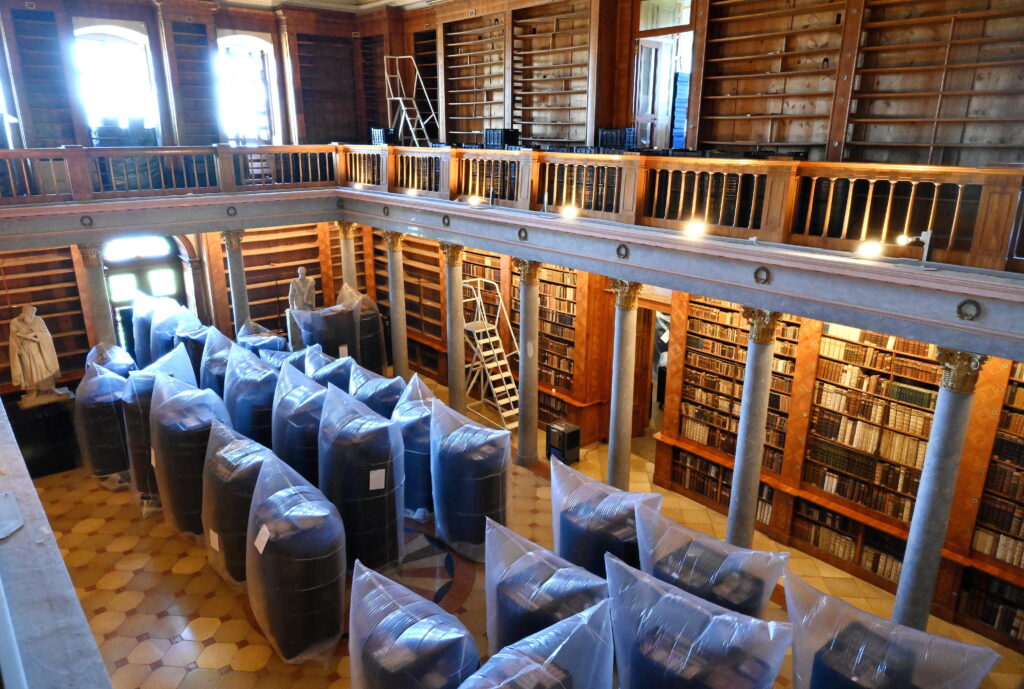
Plant species that once thrived in the region may disappear, as the climate is no longer suitable for them.Continue reading

Book-eating insects have attacked the valuable collection of the library at Pannonhalma Archabbey. The drugstore beetle, also known as the bread beetle, can cause damage almost anywhere. Its spread is facilitated by rising temperatures as a result of climate change, for which Pannonhalma is a sad example.
The drugstore beetle (Stegobium paniceum), which has infested the famous book collection at Pannonhalma, is found worldwide, but is most common in warmer climates. The adult beetles are small, only 3-4 mm long, reddish-brown in color, and have a cylindrical body. The larvae are slightly larger, 5-6 mm long, and have a characteristic curved posture. Their pupae are slimmer than those of their close relative, the tobacco beetle.
They need at least 18-20 degrees Celsius to fully develop. The rise in temperature we are experiencing in Hungary is therefore favorable for their reproduction.

Photo: Wikipedia
Males and females are almost indistinguishable to the naked eye; a microscope is required to determine their sex. On closer inspection, a slit-shaped pattern can be seen on the legs of the males, which is absent in the females. The easiest way to distinguish them is during pupation, when the female’s reproductive organs are pronounced and easily recognizable, while those of the males are less developed. In adult beetles, the reproductive organs are located inside the body.
It sometimes damages museum objects, wool, furs, leather goods, books, textile coverings, and even manuscripts.
The animal glue and vegetable starch contained in the spines of old books are excellent food for the drugstore beetle.
The book collection of Pannonhalma Archabbey also bears traces of this destruction.
Drugstore beetles cause the most damage in their larval stage. The insect’s diet is extremely varied: it consumes medicines, medicinal herbs, and both edible and inedible substances. It likes bread, grains, coffee, milk powder, as well as sweets such as chocolate and cookies. It also likes spices, dried fruits, and seeds.
According to experts, the insects entered the main library of Pannonhalma, where they found ideal food and a safe breeding ground, through doors and windows or hidden on people’s clothing.
Climate change has also caused the temperature and humidity in the library to rise in recent years, which is particularly favorable for the beetles, as it allows them to reproduce more quickly. According to experts, the protection method must be chosen in such a way that the library’s valuable holdings are not damaged.

Books treated with anoxic process at the Pannonhalma Archabbey Library on July 3, 2025. Photo: MTI/Krizsán Csaba
The Hungarian Government, Minister of Culture Balázs Hankó, and the Prime Minister’s Office all provided emergency aid, Máté Vincze, Deputy State Secretary for Public Collections and Cultural Development, announced last Thursday. The aid consisted of a grant of HUF 100 million (EUR 250,000), and experts from the inventory protection committee coordinated by the Museum of Ethnography traveled to the scene at the first signs of infestation, and provided immediate assistance in assessing the damage and finding suitable technology to limit the damage.
A chemical-free solution had to be found to protect the World Heritage Site building, its beautiful frescoes, and artifacts.
Fortunately, it is easier to combat the pests at home. If an infestation is suspected, food storage areas should first be thoroughly cleaned. Then, all food that could be consumed by drugstore beetles should be inspected. Infested products should be disposed of in a tightly sealed bag or destroyed. Since the pest can gnaw through packaging material, it is important to dispose of infested goods as quickly as possible. In a home environment, the use of insecticides is generally not justified.
Via Origo, Featured image: MTI/Krizsán Csaba